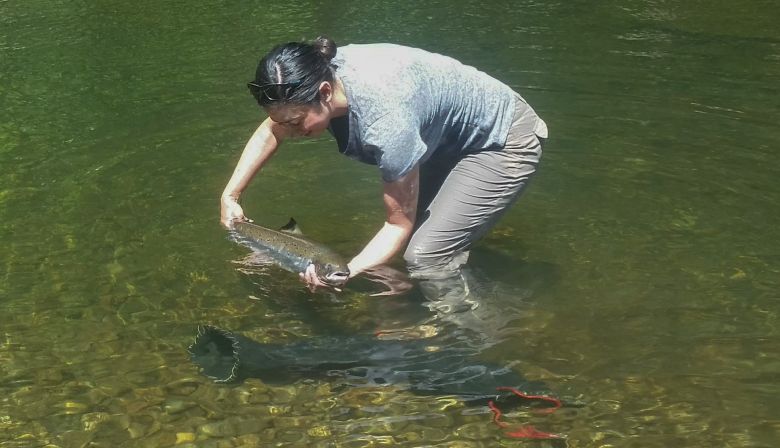Atlantic salmon are an iconic species of the Northeast. They once returned by the hundreds of thousands to most major rivers along the northeastern United States. Now, they only return in small numbers to rivers in central and eastern Maine. These populations comprise the Gulf of Maine distinct population segment.
Proposed projects funded under these partnerships will improve fish passage. They will remove or modify dams, culverts, and other barriers blocking Atlantic salmon from reaching their habitats. They will also restore the structure and function of streams used by Atlantic salmon for spawning and rearing.
We’re recommending nearly $900,000 to fund the first year of four multi-year efforts:
The Atlantic Salmon Federation will implement five projects to restore access to Atlantic salmon spawning and rearing habitats in the Kennebec River watershed. They will also conduct a fish passage feasibility study at the Chesterville Wildlife Management Area Dam on Little Norridgewock Stream. ($213,854)
Project SHARE will replace undersized culverts at 13 sites, connecting habitat for Atlantic salmon across the Dennys, Machias, Pleasant, Union, and Narraguagus River watersheds. They will also conduct fish passage feasibility studies at the Great Works Dam and at Marion Falls fishway. Funding will also support freshwater habitat restoration work in the Narraguagus River watershed. ($303,225)
The Nature Conservancy will complete the final designs to remove Guilford Dam and restore the adjacent floodplain, which will reconnect habitat for Atlantic salmon in the Piscataquis River watershed. They will also restore access to high-quality habitat by improving fish passage at three high-priority road crossings over streams. ($250,000)
The Downeast Salmon Federation will support fish passage feasibility studies at the Cherryfield Ice Control Dam on the Narraguagus River and the Gardner Lake Dam on the East Machias River, to support future habitat restoration in these watersheds. Funding will also support fish passage improvements at the Gardner Lake Dam. ($131,000)
Degraded habitat is one of the largest obstacles facing the recovery of threatened and endangered species like Atlantic salmon. Habitat restoration helps repair areas that have been destroyed by development, blocked by dams, or otherwise subjected to habitat destruction. Through funding and technical assistance, NOAA supports projects that restore the habitats that threatened and endangered species need to recover.
